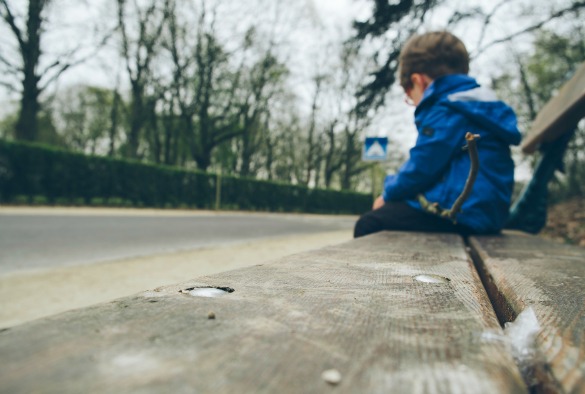
David Taylor-Robinson is Professor of Public Health and Policy in the University's Department of Public Health and Policy and Systems.
The following editorial was written by all Professor Taylor-Robinson and published The BMJ:
When the Titanic sank there was a linear relation between the social class of passengers and their risk of drowning. During the bubonic plague, the upper classes fled Italian cities for safer country residences, heeding the public health advice, "cito, longe, tarde" (flee early, flee far, return late); the less wealthy were left behind and died disproportionately as a result. A similar pattern was seen in New Orleans during Hurricane Katrina. History tells us that, during times of crisis, vulnerable groups lose out most. The COVID-19 pandemic is no different. Emerging data show the pandemic tracking along social fault lines. And although children are not the face of this pandemic, they are deeply affected. The UN warns of "unprecedented risks to the rights and safety and development of the world's children."
During childhood, we are especially vulnerable to the main determinants of health: living conditions, family income, employment, education, access to health services. The pandemic can be conceived as an additional systemic shock to these determinants. In the shorter term, with the focus squarely on adults with COVID-19, child health and social care services are being side-lined. These include acute services for life threatening illnesses, outpatient services for chronic conditions, child protection services guarding against abuse and neglect, and preventive services that support early years development, routine checks, and immunisations. Global modelling predicts a stark increase in child mortality as a result of diversion of care. As soon and as seamlessly as possible, we must restore these services to full, and greater, capacity.
Within family homes, the unintended consequences of the lockdown will affect poor children the most. Greater "toxic stress" for many families will increase the risk of neglect and domestic violence. Exposure to these adversities can have lifelong health impacts. Many children are going hungry as foodbanks scramble to reconfigure services to meet the rising tide of food insecurity. Lockdown in poor quality and overcrowded housing, with inequitable access to safe green space, will disrupt children's lives, some more than others.
Social distancing measures and school closures are interrupting educational trajectories. Teachers must be commended for developing online resources, under huge pressure and in difficult circumstances, but for some children the lack of internet, electronic devices, and quiet space at home will further exacerbate inequalities in educational outcomes. Despite plans for the phased reopening of schools, an increasing dependence on supplementary online learning seems assured.
Child poverty
In the longer term, we must consider the effects of an economic recession on child health. COVID-19 has already caused the most aggressive decline in the global economy seen in modern times. The 2008 financial crash taught us that, of all age groups, children are most likely to fall into poverty. In 2017, child poverty, a major driver of poor child health, had risen to 4.1 million children, or 30% of all English children. The UN pronounced child poverty in the UK "not just a disgrace, but a social calamity and an economic disaster." Before the pandemic, child poverty was predicted to rise steeply in the coming years. Now we must revisit these predictions: 75% of children already in poverty belong to a family with one working parent; 6 million workers are estimated to become unemployed in the UK as a result of the pandemic; and parents working low hours contracts or within the "gig economy" are particularly vulnerable.
Swift financial action has sought to mitigate the economic effect of COVID-19. But short term macroeconomic stabilisation often comes at the expense of subsequent public spending. Austerity measures affect deprived children disproportionately, and the rollout of Universal Credit was predicted to be a major driver of child poverty. Immediate action is needed to put money in the pockets of families with children. A modest increase in child benefit of £10 a week for each child would reduce child poverty by 5%. More generous universal credit payments to families with children should be a priority, and the two child limit should be scrapped.
The furlough scheme should be extended to caregivers who must look after their children. Even as schools reopen, the Department for Education should work with local authorities and digital providers to ensure all children's access to a computer and broadband. In the longer term, funding for services that support children should be increased and delivered according to need. Research and health equity impact assessments must shed light on the long term unintended consequences of control measures for children and inform policy responses.
Many of the medical problems seen in deprived children flow from restricted opportunities to be healthy-exposure to poverty, unhealthy environments, lower quality nutrition, poor quality air, substandard housing, and chronic stress. We cannot predict how this pandemic will play out, or for how long. What is certain is that, unless there is a proactive and concerted policy focus on vulnerable children, they will face the fall-out.
The UN Convention on the Rights of the Child affords children special protection. We must ensure that these rights are not overlooked, as they have been in the past. Children will get left behind unless we act now.
The original editorial can be found here.






